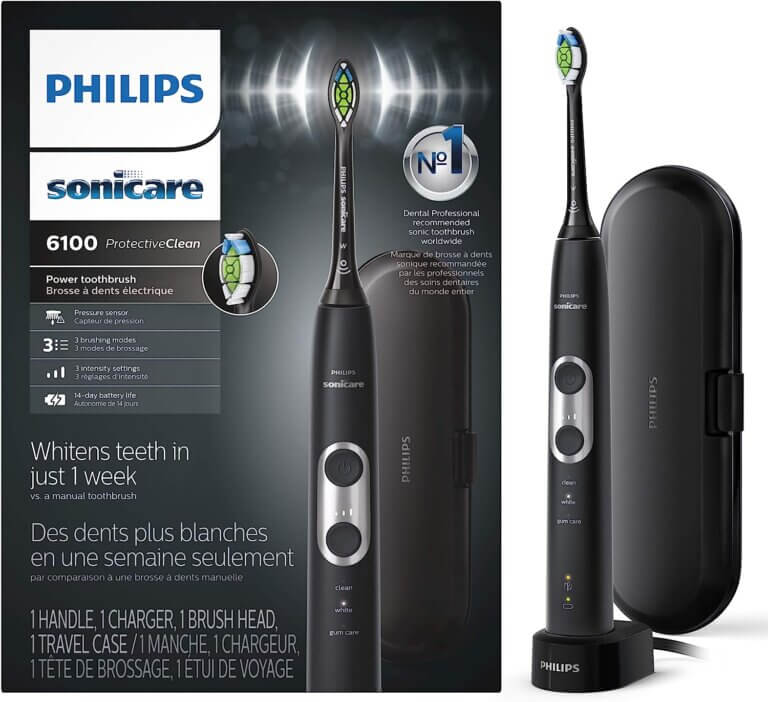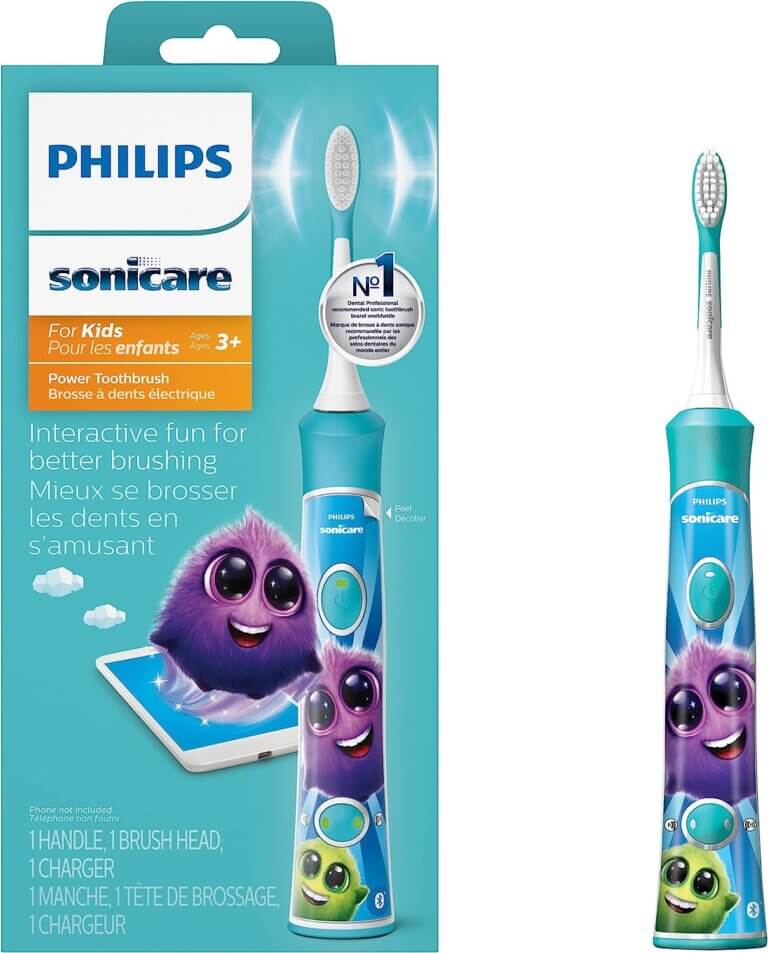How to Choose the Best Electric Toothbrush for Your Dental Needs
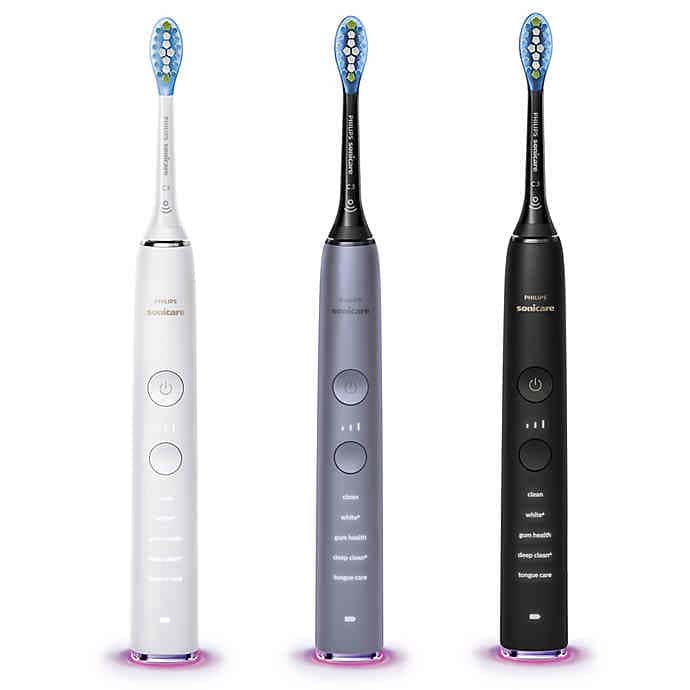
What Is an Electric Toothbrush?
An Electric Toothbrush, also called a Power Brush, is a type of toothbrush that uses electrical power to vibrate, rotate or oscillate the bristles to help clean your teeth. Unlike traditional manual toothbrushes, electric toothbrushes require minimal effort to use and are designed to provide a more effective cleaning experience.
Electric toothbrushes come in different sizes, shapes, and features. Some have rotating heads, while others use sonic technology to create high-frequency vibrations. Some models even come with built-in timers to ensure that you brush for the recommended two minutes.
While electric toothbrushes may cost more than manual toothbrushes, they offer several benefits. For instance, they can help remove plaque and reduce the risk of gum disease and tooth decay, as well as make brushing easier and more enjoyable.
Before you visit your local pharmacy to buy Electric Toothbrush, there are some things you should know as a dental patient:
- Why Should I Use An Electric Toothbrush?
- Proper Technique Using An Electric Toothbrush
- How Often Should I Use An Electric Toothbrush?
- Choosing The Right Type of Electric Toothbrush
- Our Recommendations for An Electric Toothbrush
- Alternatives to Using An Electric Toothbrush
If you have questions about Electric Toothbrush or if you need additional dental hygiene tips, please contact us for more information.
Why Should I Use an Electric Toothbrush?
Using an electric toothbrush has several benefits over using a manual toothbrush. Here are some reasons why you should consider switching to an electric toothbrush:
- More Effective Cleaning: Electric toothbrushes are designed to provide a more thorough cleaning experience compared to manual toothbrushes. The high-speed movements of the bristles can help remove plaque and bacteria from hard-to-reach areas of the mouth, such as the back molars.
- Easier to Use: Electric toothbrushes are easier to use compared to manual toothbrushes, especially for people with mobility issues, arthritis or other conditions that affect dexterity. The brush does the work for you, making it easier to achieve optimal cleaning.
- Better for Gum Health: Electric toothbrushes can help reduce the risk of gum disease by removing more plaque and bacteria from the gum line. They are also gentler on the gums compared to manual toothbrushes, reducing the risk of gum recession and bleeding.
- Built-In Timers: Many electric toothbrushes come with built-in timers that ensure you brush for the recommended two minutes. This can help improve your brushing habits and ensure that you’re brushing for the right amount of time.
- Fun and Enjoyable: Using an electric toothbrush can be a fun and enjoyable experience, especially for children who may be resistant to brushing their teeth. Many electric toothbrushes come in different colors, designs, and even play music, making brushing a more enjoyable experience.
In summary, an electric toothbrush can help improve your oral hygiene, make brushing easier and more enjoyable, and reduce the risk of gum disease. If you’re looking for an effective and efficient way to keep your teeth and gums healthy, an electric toothbrush is a great investment.
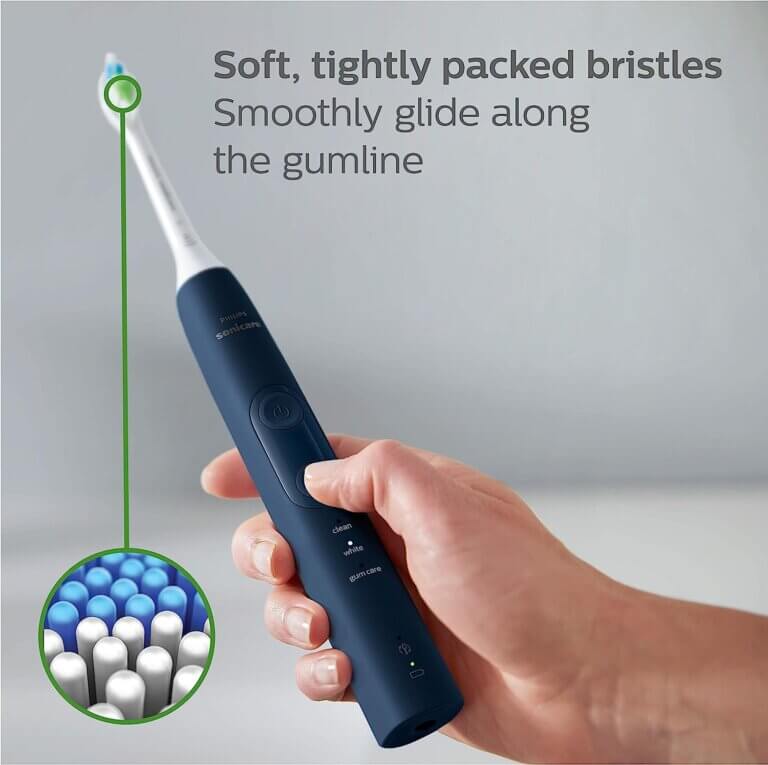
Proper Technique Using An Electric Toothbrush
While using an electric toothbrush may seem straightforward, it’s important to use the proper technique to ensure that you’re getting the most out of your brushing experience. Here are some tips for using an electric toothbrush:
- Wet the bristles: Before applying toothpaste, wet the bristles of your electric toothbrush with water to help the toothpaste spread evenly across your teeth.
- Apply toothpaste: Apply a pea-sized amount of toothpaste onto the bristles of your electric toothbrush. You do not need too much toothpaste. Avoid using too much toothpaste, as this can cause foaming and make it harder to brush effectively.
- Turn on the toothbrush: Once the toothbrush is in your mouth, turn it on and begin brushing your teeth. Some power brushes have an adjustable power setting that lets you control the strength of the vibrations. Allow the bristles to do the work and don’t apply too much pressure, as this can damage your teeth and gums. Some models of electric brushes have an automatic stop function if you press too hard. If your toothbrush splays out very quickly, this is often a sign that you are pressing too hard.
- Brush for two minutes: Aim to brush your teeth for at least two minutes, or as long as the built-in timer on your electric toothbrush indicates.
- Focus on each quadrant: When brushing, focus on each quadrant of your mouth for about 30 seconds. This ensures that you’re brushing all areas of your mouth thoroughly.
- Rinse your toothbrush: Rinse your electric toothbrush under running water and allow it to air dry before storing it.
By following these tips, you can ensure that you’re using your electric toothbrush effectively and improving your oral hygiene. Remember to replace the brush head every three months or sooner if the bristles become frayed or worn.
How Often Should I Use an Electric Toothbrush?
Regular use of an electric toothbrush is essential to maintain good oral hygiene. Here are some tips to help you develop a regular brushing routine:
- Brush at least twice a day: Conventional wisdom says that you should brush at least twice a day, once in the morning and once before you go to bed. Two times a day is a good rule of thumb. Ideally, you should brush right after a meal. This is to maximize the amount of time your teeth stay clean between meals.
- Ideally brush After Meals: If possible, brush your teeth after meals to remove food particles and bacteria that can lead to tooth decay and gum disease. If you make it a habit to brush right after breakfast, lunch and dinner, your teeth will theoretically remain clean throughout the day (except for the few minutes that you are eating).
- When You Cannot Brush Your Teeth, Rinse with Water or Mouthwash: It is sometimes not practical to be brushing more than two times a day. You may be busy at work or at school during your day and cannot find time to brush after lunch. If this is the case, at least rinse with water or mouthwash to get as much food debris and taste out of your mouth.
By using your electric toothbrush regularly and following these tips, you can help maintain good oral hygiene and promote long-term dental health.
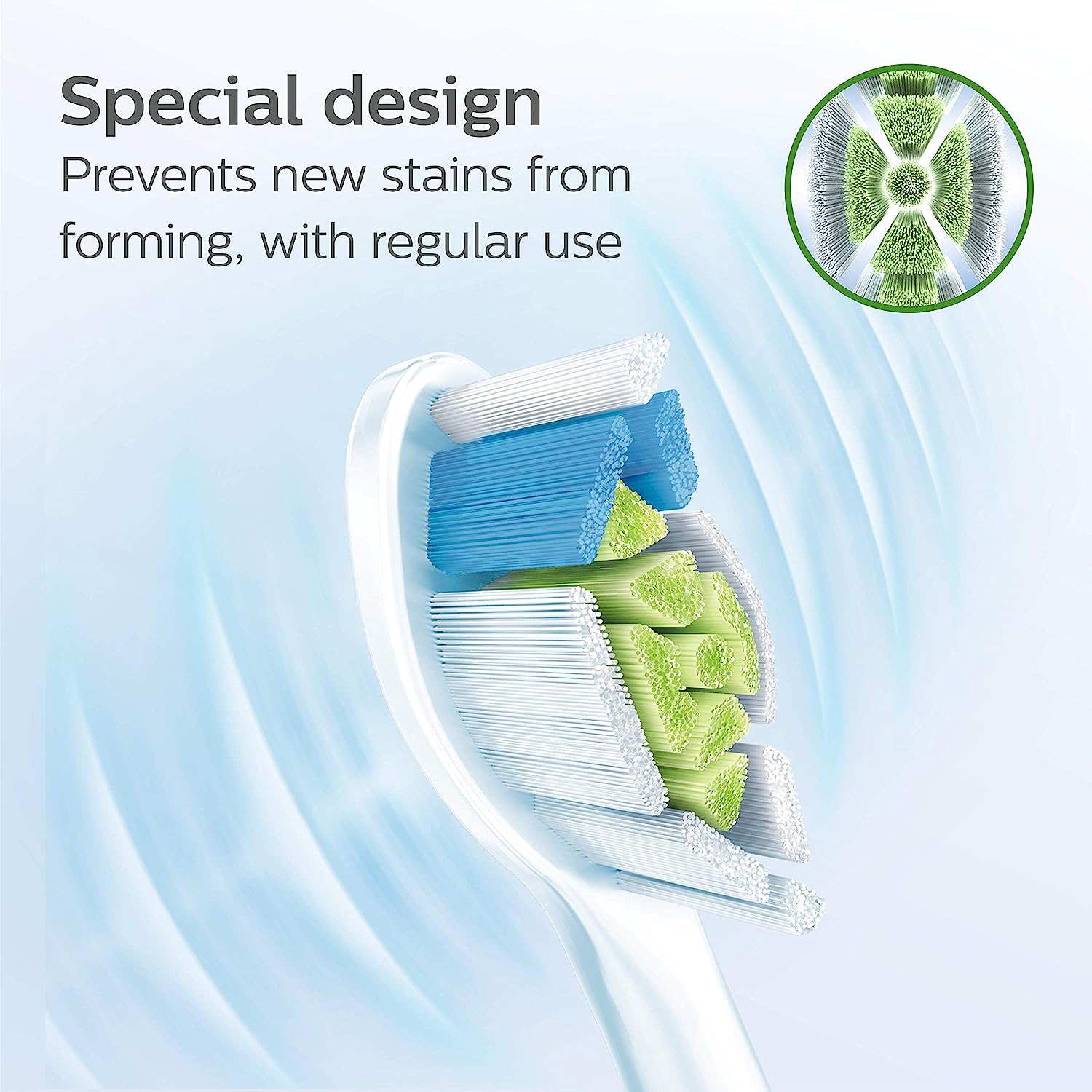
Choosing The Right Type of Electric Toothbrush
When it comes to choosing the right type of electric toothbrush, there are several factors to consider. Here are some things to keep in mind:
- Oscillating vs. Sonic: There are two main types of electric toothbrushes: oscillating and sonic. Oscillating brushes have a circular brush head that rotates back and forth, while sonic brushes vibrate at high speeds to create a sweeping motion. Both types of brushes are effective at removing plaque, so the choice ultimately comes down to personal preference. However, we prefer the sonic toothbrushes because we think it is gentler on teeth and gums.
- Built-in Timer: It may be valuable to have an electric toothbrush with a built-in timer to ensure that you’re brushing for the recommended two minutes. Some brushes also have a quadpacer feature, which alerts you when it’s time to move on to the next quadrant of your mouth.
- Pressure Sensor: Some electric toothbrushes have a pressure sensor that alerts you when you’re brushing too hard. This can help prevent damage to your teeth and gums.
- Intensity Setting Adjustability: Some electric toothbrushes come with adjustable intensity settings, allowing you to customize the brushing experience to your liking. If you have sensitive teeth or gums, a lower intensity setting may be more comfortable.
- Battery Life: If you travel frequently or have limited access to electrical outlets, choose an electric toothbrush with a longer battery life.
- Price: Electric toothbrushes can range in price from under $20 to over $200. Consider your budget and choose a brush that fits your needs without breaking the bank.
By considering these factors, you can choose the right type of electric toothbrush for your needs and improve your oral hygiene. Remember to replace the brush head regularly and use your electric toothbrush twice a day, every day, for optimal results.
Our Recommendations for an Electric Toothbrush
With so many options on the market, it can be overwhelming to choose the right electric toothbrush. Here are our recommendations based on factors such as effectiveness, features, and price:
The Philips Sonicare Protectiveclean 6100 is a premium electric toothbrush that offers exceptional value for its price. It comes equipped with advanced sonic technology that delivers up to 62,000 brush movements per minute, effectively removing plaque and improving gum health in just two weeks.
One of the key features of the Protectiveclean 6100 is its pressure sensor technology, which alerts you when you’re brushing too hard and may cause damage to your teeth and gums. Additionally, it has three intensity settings and three brushing modes (Clean, White, and Gum Care) to accommodate a variety of brushing preferences and dental needs.
The Protectiveclean 6100 also includes a BrushSync technology that tracks the usage of the brush head and reminds you when it’s time to replace it. The brush head itself is designed with angled bristles that can reach deep into hard-to-reach areas for a more thorough clean.
Other notable features of the Protectiveclean 6100 include a two-week battery life, a sleek and ergonomic design, and a travel case for convenient on-the-go use. Overall, the Philips Sonicare Protectiveclean 6100 is an excellent choice for anyone looking for a high-quality electric toothbrush at an affordable price.
The Philips Sonicare for Kids is an excellent electric toothbrush that is specifically designed to make brushing fun and easy for children. It features a kid-friendly design that is both colorful and appealing, making it an excellent choice for parents who want to encourage their children to develop good oral hygiene habits from a young age.
The Sonicare for Kids uses Sonic technology, which delivers up to 500 brush strokes per second, providing a thorough clean that is gentle on your child’s teeth and gums. It also features a KidTimer and KidPacer, which encourage children to brush for the recommended two minutes and divide their brushing time equally between the four quadrants of the mouth.
The toothbrush comes with two different brush head sizes, making it suitable for children of different ages. Additionally, the brush head is designed with soft bristles that are gentle on your child’s teeth and gums, ensuring a comfortable and effective clean.
One of the key features of the Sonicare for Kids is its Bluetooth connectivity, which allows parents to track their children’s brushing habits using a companion app. The app also includes fun games and rewards that encourage children to brush regularly and effectively.Overall, the Philips Sonicare for Kids is an excellent choice for parents who want to encourage their children to develop good oral hygiene habits. With its fun and colorful design, advanced Sonic technology, and innovative tracking features, it is undoubtedly the best electric toothbrush for children on the market.
Alternatives to Using an Electric Toothbrush
While electric toothbrushes can be a great tool for improving oral hygiene, they’re not the only option. Here are some alternatives to consider:
- Manual Toothbrush: A good old-fashioned manual toothbrush is still a great option for maintaining healthy teeth and gums. Look for a toothbrush with soft bristles and replace it every three to four months.
Remember, the key to good oral hygiene is consistency. Whatever method you choose, make sure to brush and floss regularly and visit your dentist for routine checkups and cleanings.

